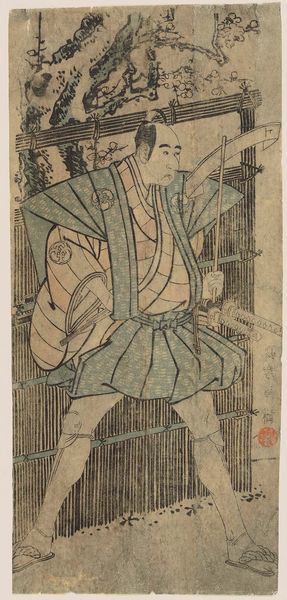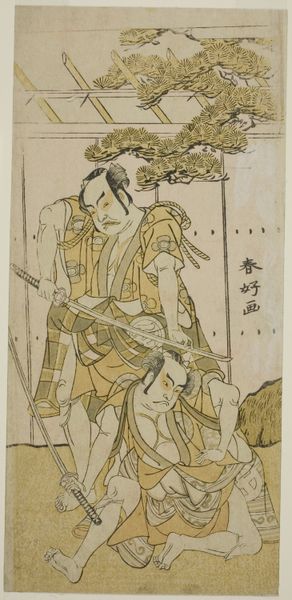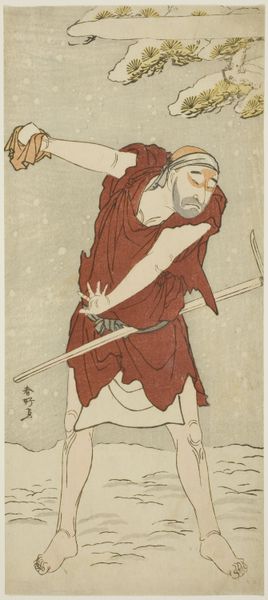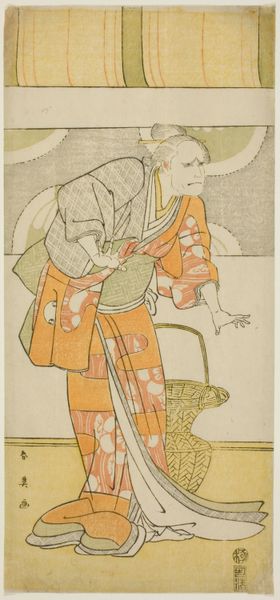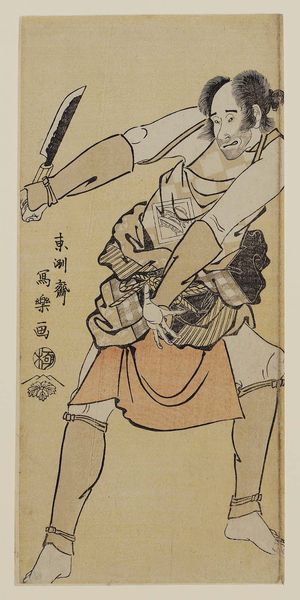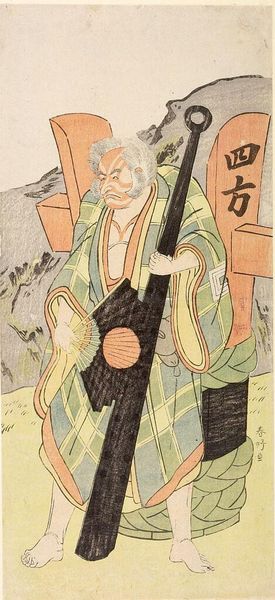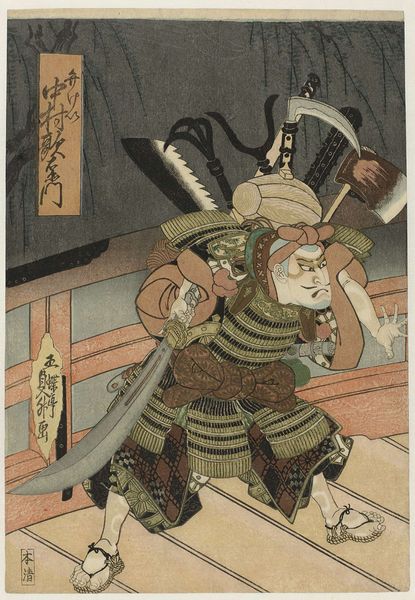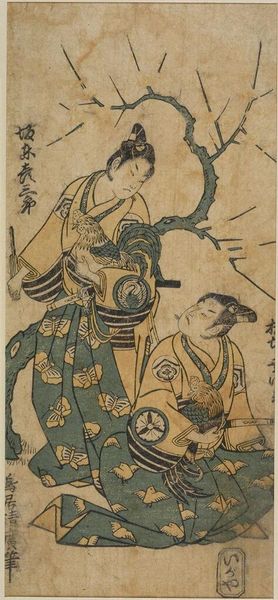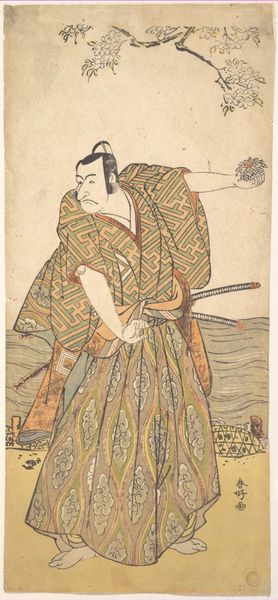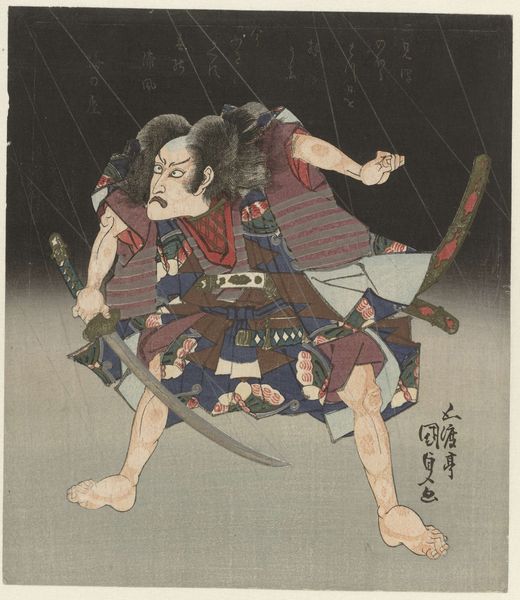
Copyright: Public Domain: Artvee
Curator: Here we have Tsukioka Yoshitoshi’s woodblock print, "Shitakiri Suzume," created around 1880. Editor: Wow. He looks… weary. That’s my first impression. All hunched over, weighed down. It’s like the weight of the world, or at least a rather elaborate lacquered box, is on his back. Curator: Indeed. This piece draws heavily from Japanese folklore, specifically the tale of "The Tongue-Cut Sparrow." Yoshitoshi, working within the Ukiyo-e tradition, uses figuration to convey a rich narrative here. Editor: A sparrow, you say? This doesn’t exactly scream “light and airy” to me. The muted tones, that skeletal physique...it all feels rather ominous. Is he a villain? Curator: In the folktale, an old man helps an injured sparrow, which leads to either good or ill fortune depending on the man’s character. Yoshitoshi highlights the burden greed places upon individuals within a community. He focuses here on the figure of an elderly man returning home laden with treasures given by the sparrows, a visual reminder of potential excess and its implications. Editor: Ah, so it's a moral tale, classic. Still, there’s something really raw about his rendering of the old man. The detail in his wrinkled skin, the almost painful bend of his back…you can feel the strain, almost hear him groan. I wonder if Yoshitoshi ever carried a box like that himself, or knew someone who did, that feeling is visceral to me. Curator: Yoshitoshi's work is recognized for its poignant social commentaries delivered through the lens of Japanese history, myth and popular culture. Here, the ukiyo-e method emphasizes lines and forms. Consider the crosshatching detailing on that treasure chest. It not only suggests texture, but also reinforces the theme of accumulation. Editor: He must have worked on the detail for a long time! To my mind, it amplifies the man’s heavy steps, he becomes almost emblematic of our human burden... Perhaps our shared tendency toward… ahem, *acquisitiveness.* He almost staggers under it all. Curator: A fitting conclusion. Yoshitoshi effectively utilizes elements from his time to explore deeper concepts about human morality and avarice across a wider spectrum of viewers. Editor: So, in the end, it makes me think of karma. And sore backs!
Comments
No comments
Be the first to comment and join the conversation on the ultimate creative platform.
